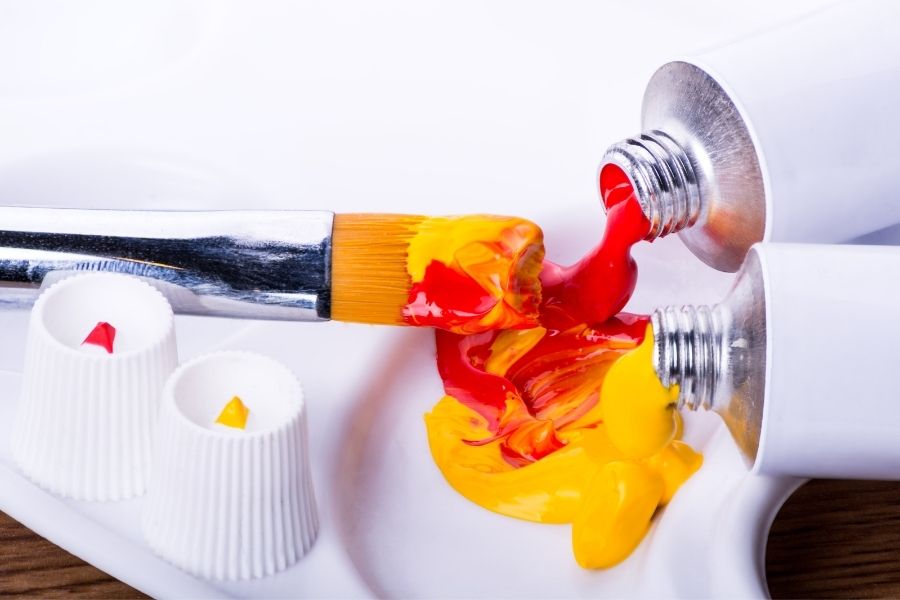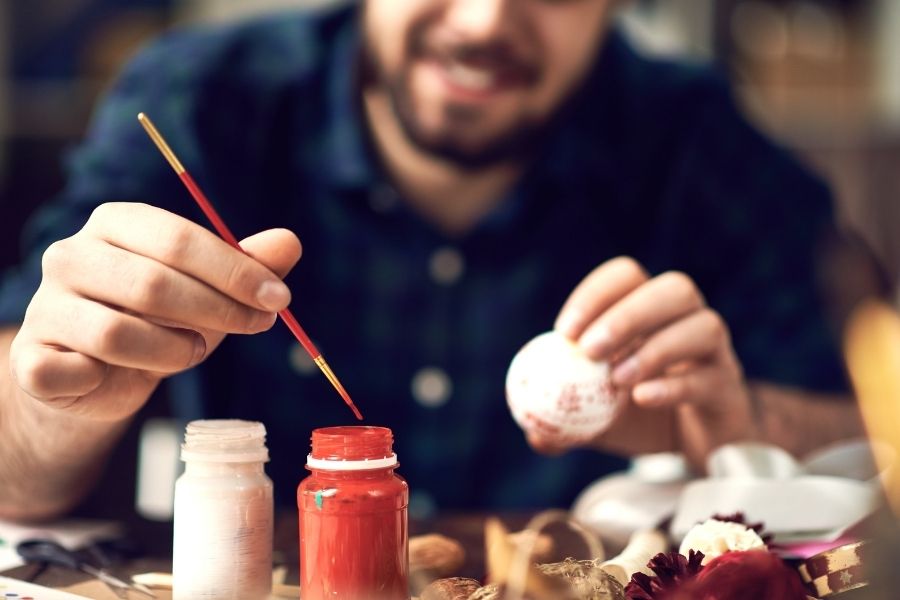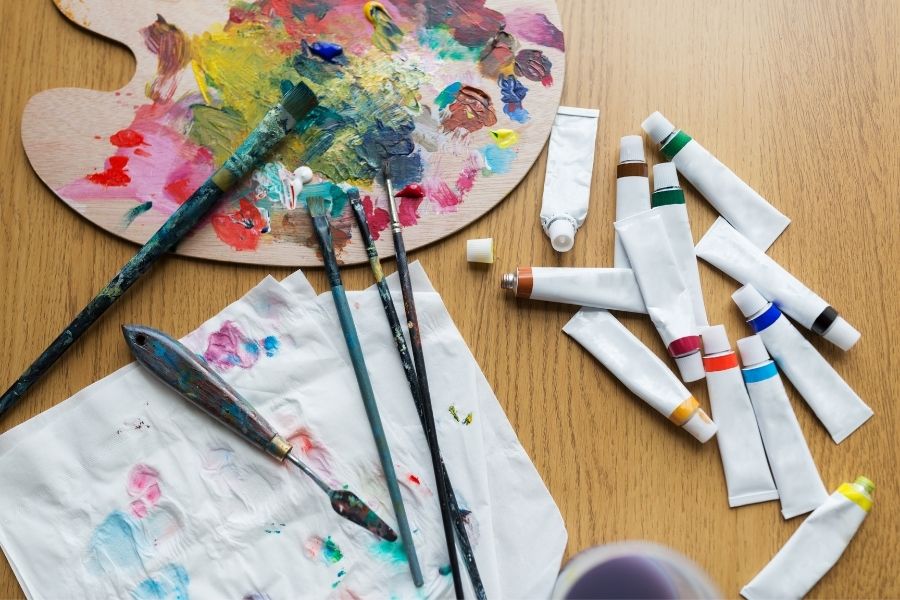16 Commonly Asked Questions by Painting Beginners

Hello, how are you today? Welcome to our blog About Painting and Art. We hope you are very well and looking forward to a new Free Art and painting Post or Tutorial.
Today we want to share with you a special post:
Top painting tips for beginners
When looking at a large painting, it can be difficult to remember that all artists were beginners at some point. Everyone has to start somewhere, and it's perfectly fine if you don't know what type of paint to use on your first canvas. This list of 16 frequently asked questions can help you get started learning to paint and have fun doing it.

Do I need to know how to draw?
If you attended a traditional art school, you would spend a year or two learning how to draw before dabbling in painting. Much like learning a new language, many teachers believe in learning the basics of perspective and shading first. There is value in this approach.
But you don't need to know how to draw to paint. All you need is the desire to create and the discipline to practice and develop your technique. You will make a lot of mistakes, but it is part of the learning process. Ultimately, what is important is artistic creation, not the path taken to get there.

What type of paint should I use?
The most commonly used types of paint are acrylic, oil, water-soluble oil, watercolor, and pastel. Each one has its own unique characteristics and properties to master, and they all seem unique. Oil paint has been used for hundreds of years and is known for its deep, rich tones. The watercolors, on the other hand, are translucent and delicate.
Many artists recommend using acrylics if you are new to painting because they dry quickly, mix and wash with water, and are easy to paint and hide mistakes. Acrylics can also be used on almost any surface, so you can paint on paper, canvas, or cardboard.

What brand of paint should I buy?
It depends on your budget. A good rule of thumb is to buy the best possible quality paint at a price that you always feel you can experiment with and "waste." Try different brands and see which ones you like to use.
There are two basic types of paint: student quality and artist quality. Student paints are less expensive and may not be as rich in hues as more expensive paints. They have less pigment and more thinner or filler.
With that said, there is no reason to spend the extra money on art-quality paintings when you're just starting out.

Can I mix different brands of paint?
Yes, you can mix different brands of paint as well as artist grade and student grade paints. Take extra care when mixing different types of paint or using them on the same paint. For example, you can use oil paints over dry acrylic paint, but not acrylic paint over oil paint.
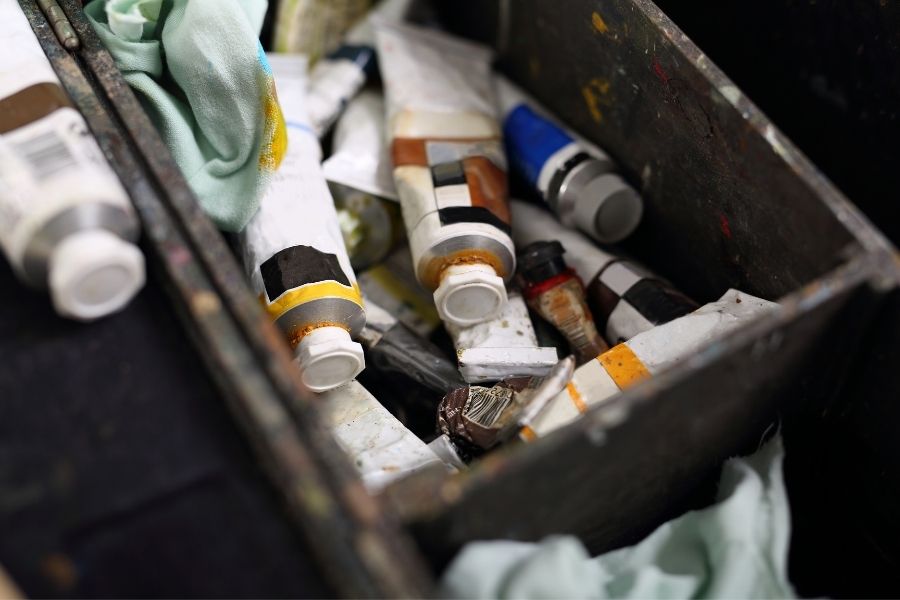
What colors should I get?
For acrylics, watercolors, and oils, if you want to mix colors, start with two reds, two blues, two yellows, and one white. You want two of each primary color, a warm version and a cool version. This will give you a greater variety of colors when mixing than just one version of each primer.
If you don't want to mix up all your colors, also get an earthy brown (burnt sienna or burnt shade), golden earth brown (golden ocher), and green (phthalo green).

Do I have to learn color theory?
Color theory is the grammar of art. Essentially, it is a guide to how colors interact, complement, or contrast with each other. This is one of the fundamentals of painting, and the more you know about the colors you use, the more you can achieve. Don't let the word "theory" intimidate you. The basics of color mixing aren't particularly difficult to understand.
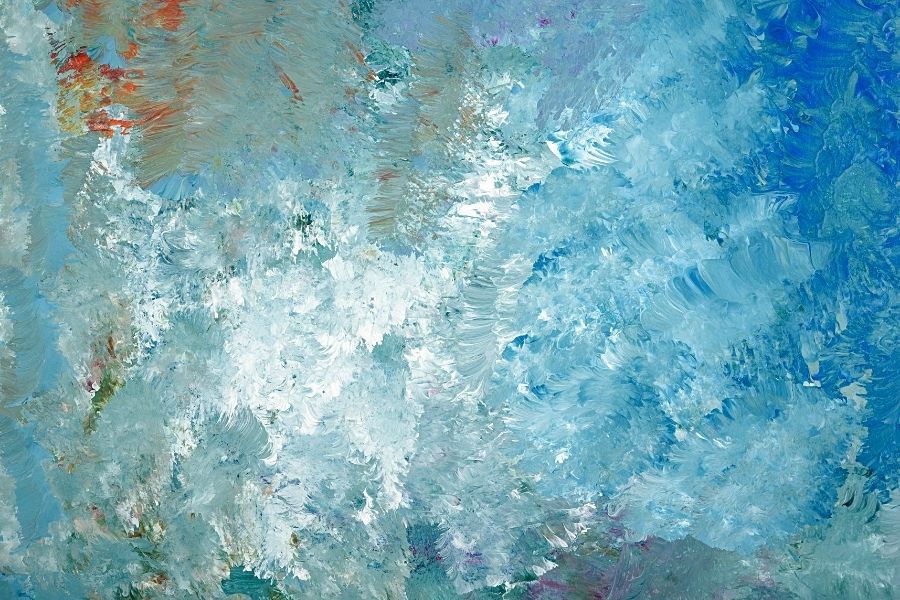
What should I paint on?
You can paint over just about anything, as long as the paint sticks and doesn't rot the surface (or, to use artistic language, the backing).
Acrylic paint can be painted on paper, cardboard, wood or canvas, with or without primer. The watercolor can be painted on paper, cardboard or special canvas for watercolor.
An oil paint base must be primed first; Otherwise, the oil in the paint will eventually rot the paper or the threads of the canvas. You can buy ready-made paper pads for greased paper, which is great for studying or if your storage space is limited.

How many brushes do I need?
As much as you want. If you're just starting out, a Filbert # 10 brush with bristle bristles is a good choice. Remember to clean your brushes regularly and replace them once the bristles start to lose their click. As you get more skilled, you will want to acquire different types of brushes for different types of paint and produce different types of lines.

Where should I put the paint that I intend to use?
If you are going to mix colors before use, you need a surface to press your paints and mix them. The traditional option is a dark wood paddle with a thumb hole for easy holding. Other options include disposable glass and paper pallets, some designed to hold and others to place on a table.
Since acrylic paints dry quickly, you can't squeeze an entire row of colors onto a traditional wooden palette and expect them to look good an hour later. You will need to use a palette that holds water or squeeze the paint only when you need it.

How thick should the paint be?
As thick or thin as your heart desires. You can change the consistency of the oil or acrylic paint with a medium to make it thinner or thicker. The watercolors are even simpler; they become more transparent as you dilute them.

How often should I clean a brush?
If you want your brushes to last, clean them thoroughly every time you finish painting for the day. Acrylics and watercolors can be removed only with water. You will need to use a chemical solvent, such as a brush cleaner, to remove the oil paint.

Should I hide my brush?
Whether you leave brush strokes visible in a painting depends entirely on whether you like it as a painting style. If you don't like visible brush strokes, you can use Blending and Glazing to remove all traces, just like in Chuck Close's photorealistic style. Alternatively, you can embrace the brush strokes as an integral part of the painting, imitating the daring manner of Vincent Van Gogh.

Where do I start?
There are different ways to start a painting, from blocking in rough areas of color to doing a detailed primer in one color. No approach is more correct than another. It is a matter of personal preference. But before you begin, make sure you've carefully considered your choice of theme, canvas size, and a half. Being prepared is always the best way to start painting.

How long does it take to complete a painting?
Dans son livre "Sur l'art moderne", l'artiste Paul Klee a écrit: "Rien ne peut être précipité. Il faut qu'il grandisse, il doit grandir de lui-même, et si le moment est venu pour ce travail - best!"
A painting takes as long as it takes. But remember, you don't have a deadline to complete either. Don't rush and be patient with yourself, especially when starting out.

When is a painting really finished?
Better to stop too early than too late. It's easier to do something else on a board later than to undo something if you overwork it. Put the paint aside and do nothing for a week. Leave it somewhere where you can see it regularly, even sit back and look at it critically. But resist the urge to gamble until you are sure that what you are going to do will pay off.

Can I paint a photograph?
There is absolutely nothing wrong with using a photo for reference. Artist Norman Rockwell has used elaborate stage photography for most of his work, for example. However, whether he wishes to reproduce a photograph as a painting, that is another matter, as it depends on who owns the rights to the image and whether he intends to sell his work for money.
If he took the photo, he owns the rights to that image and can reproduce it. But if he took a photo of a person or a group of people, he may need his permission to reproduce his image in a painting (and he may have to share the proceeds with them).
But if you want to paint an image taken by someone else (a photo from a fashion magazine, for example) and then sell that painting, you will need to get permission from the person or agency that owns the rights to the images.
Enjoy The Video Tutorial about 10 Simple Acrylic Painting Tips
Source: Katie Jobling

Ok, That is all for now…
If you enjoyed this article please, Share and Like our Facebook Page. Thanks.
See you in the next post, Have a Wonderful Day!


